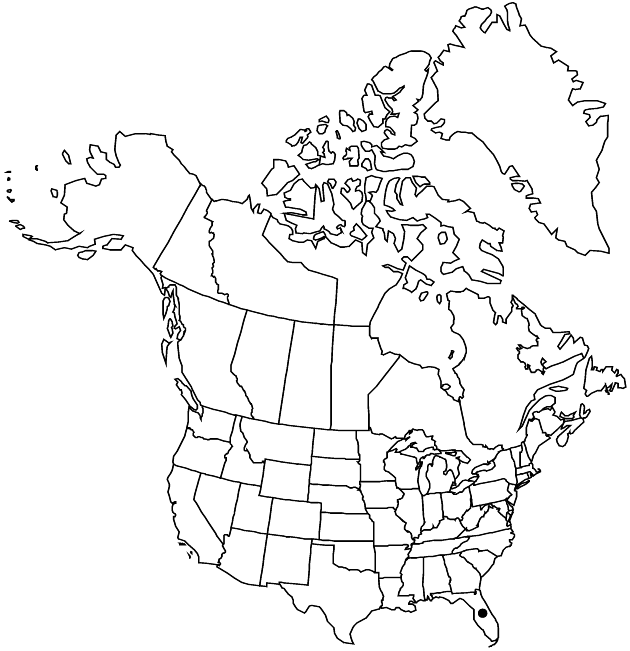Liatris ohlingerae
Contr. Gray Herb. 104: 49. 1934.
Plants 30–100 cm. Corms nearly cylindric. Stems minutely and closely villous-puberulent, glabrescent. Leaves: basal and proximal cauline (usually withering before anthesis) 1-nerved, linear, 80–150 × 1–2(–2.5) mm, gradually reduced distally, essentially glabrous or sparsely puberulent and soon glabrescent, gland-dotted. Heads (1–30) in open, corymbiform to racemiform arrays. Peduncles (spreading-ascending) 20–70 mm. Involucres hemispheric to campanulate or broadly turbinate, 17–23 × 15–20 mm. Phyllaries in 6–7 series, oblong, strongly unequal, essentially glabrous, margins with (faintly purplish) hyaline borders, ciliolate, apices rounded to obtuse. Florets ± 20–30; corolla tubes glabrous inside. Cypselae 7–10 mm; pappi: lengths ± equaling corollas, bristles barbellate to subplumose.
Phenology: Flowering (Jul–)Aug–Nov.
Habitat: Oak scrubs, scrubby flatwoods, rosemary scrub
Elevation: 10–50 m
Discussion
Liatris ohlingerae grows in DeSoto, Highlands, and Polk counties, on Lake Wales Ridge. It is in the Center for Plant Conservation’s National Collection of Endangered Plants.
Selected References
None.
